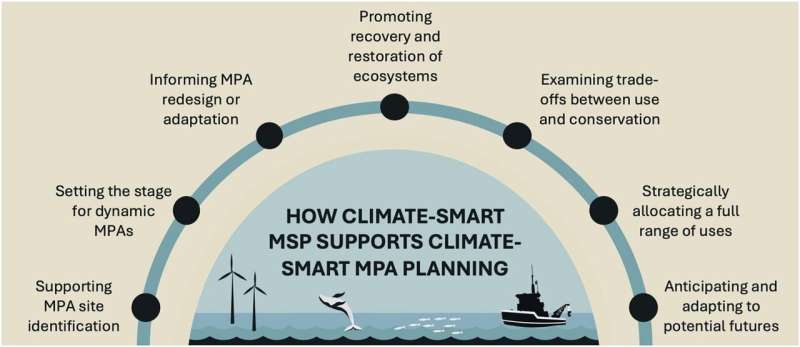Are you ready to dive into the fascinating world where science meets sustainability? In a recent study, researchers have drawn a clear map for navigating the complex waters of marine spatial planning and marine protected area planning. These efforts are vital as the oceans face rapid climate changes. Let’s explore how they can work together for a healthier planet!

This week, a team of dedicated researchers shared their findings in a paper published in npj Ocean Sustainability. They investigated how marine spatial planning (MSP) and marine protected area (MPA) planning can work in harmony, especially amid the urgent challenges posed by climate change.
While MSP and MPA planning share the common goal of ocean conservation, they have distinct purposes and methodologies. By recognizing their differences, we can pave a clearer path toward effective, climate-smart solutions.
According to Dr. Catarina Frazão Santos from the University of Lisbon, understanding these distinctions is crucial. “Marine spatial planning and marine protected area planning are not interchangeable,” she emphasizes. “Yet, together, they can tackle the pressing climate-biodiversity crisis we face today.”
Incorporating climate considerations into planning processes is essential, and spreading awareness about what MSP and MPA entail is vital. When ocean planners and managers clarify how each approach functions, they can move towards collaboration rather than confusion.
Helena Calado, an Associate Professor at the University of the Azores, adds that we need to simplify these discussions. “A consistent approach to these concepts will help avoid unnecessary confusion and promote effective implementation of our strategies,” she notes.
To ensure success, the researchers outline five key differences that set MSP and MPA apart:
- The process of zonation
- The scale of planning (both temporal and spatial)
- Levels of stakeholder involvement
- The ability to adopt a systems view
- Incorporating climate change considerations
Additionally, the authors suggest seven pathways for enhancing synergies between MSP and MPA planning:
- Facilitating the identification of MPA sites
- Preparing for dynamic MPAs
- Adapting and redesigning MPAs
- Encouraging ecosystem recovery and restoration
- Balancing trade-offs between conservation and human use
- Strategic allocation of ocean uses
- Anticipating future changes and adapting accordingly
The research team, led by Dr. Santos, includes a diverse group of scientists and practitioners from institutions in Portugal, the United States, Italy, Canada, and the United Kingdom. Their collaborative efforts highlight the importance of integrating both planning strategies to create a sustainable ocean for generations to come.
More information:
Catarina Frazão Santos et al., “Marine spatial planning and marine protected area planning are not the same and both are key for sustainability in a changing ocean,” npj Ocean Sustainability (2025). DOI: 10.1038/s44183-025-00119-4
If you would like to see similar science posts like this, click here & share this article with your friends!

